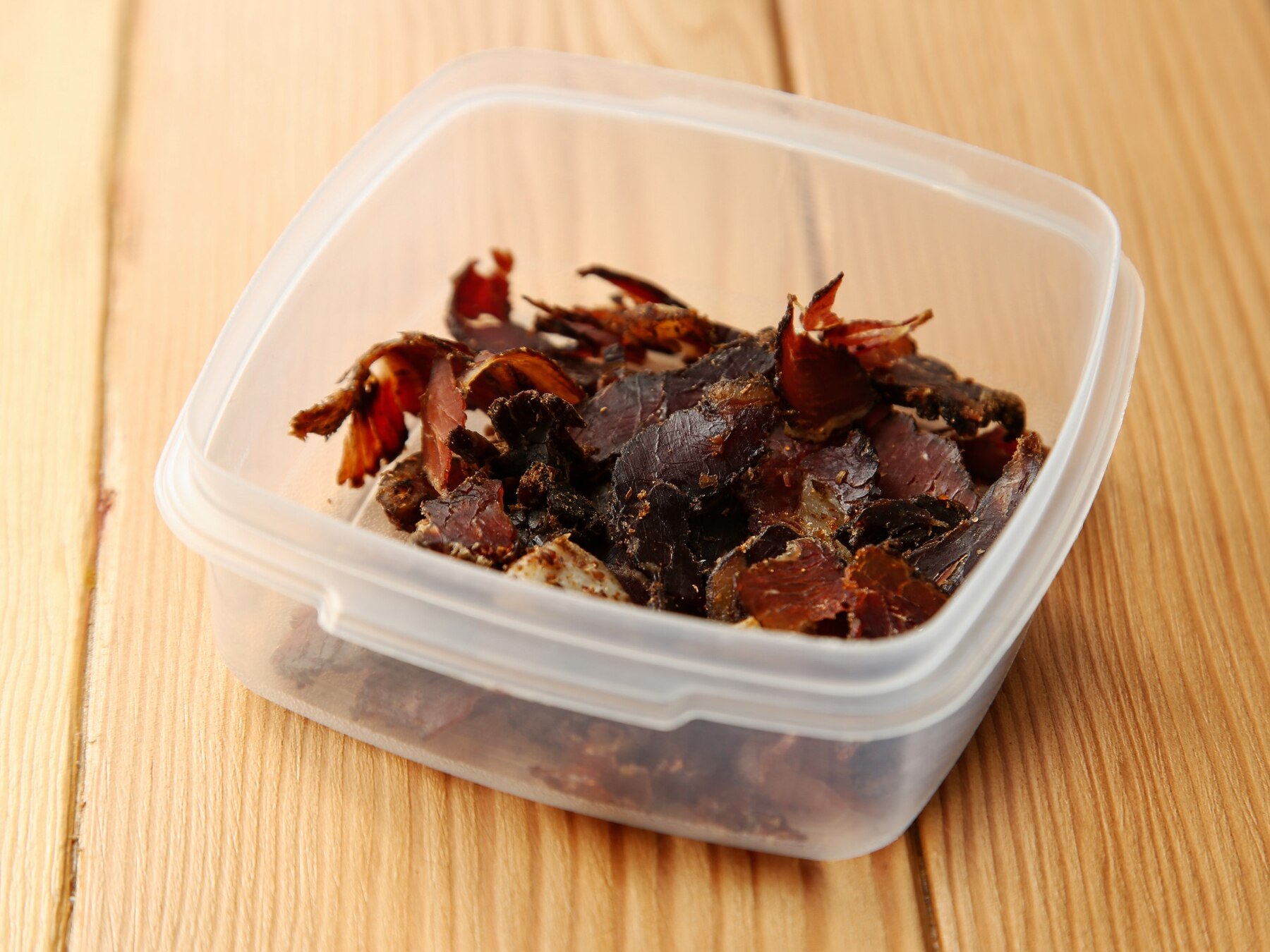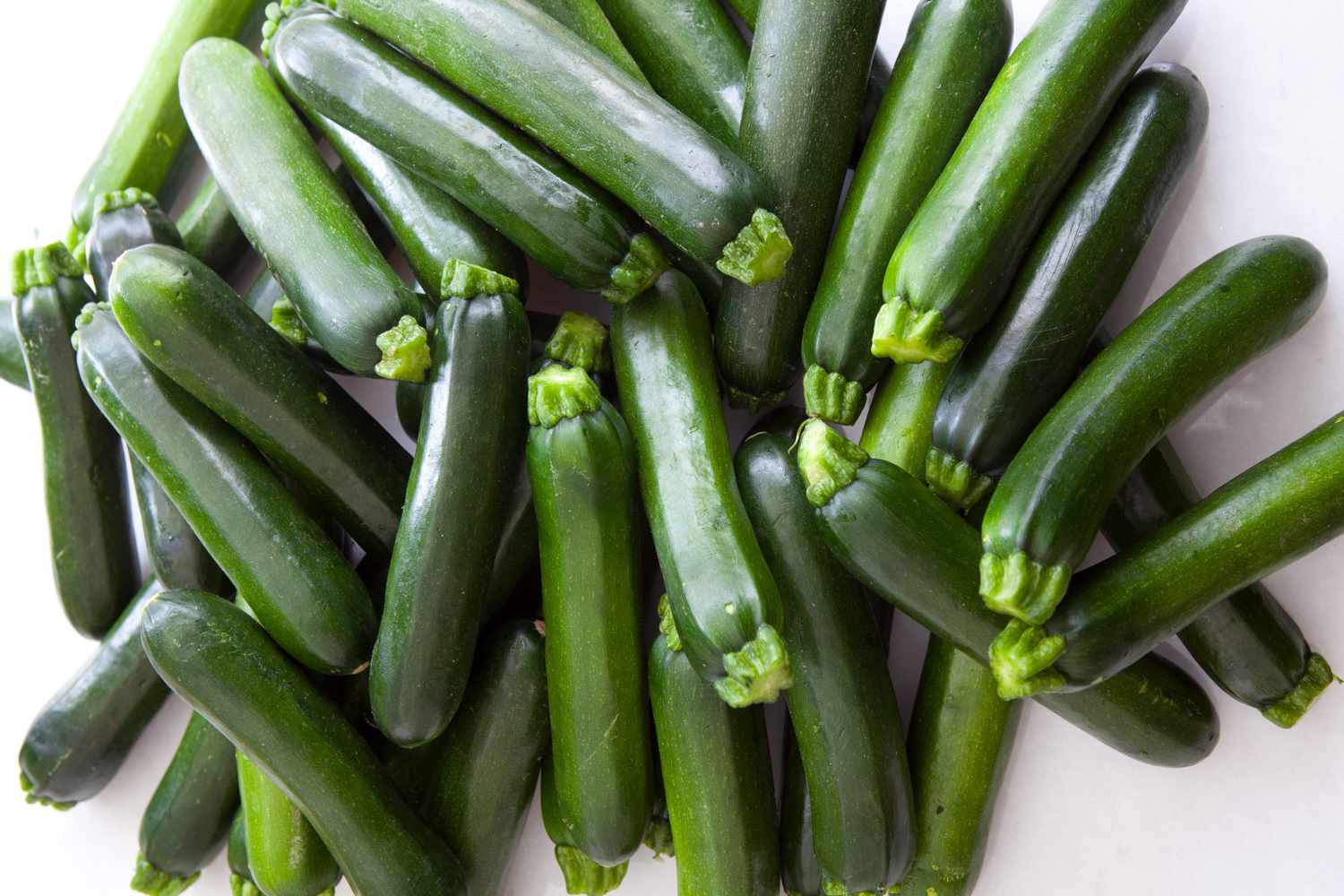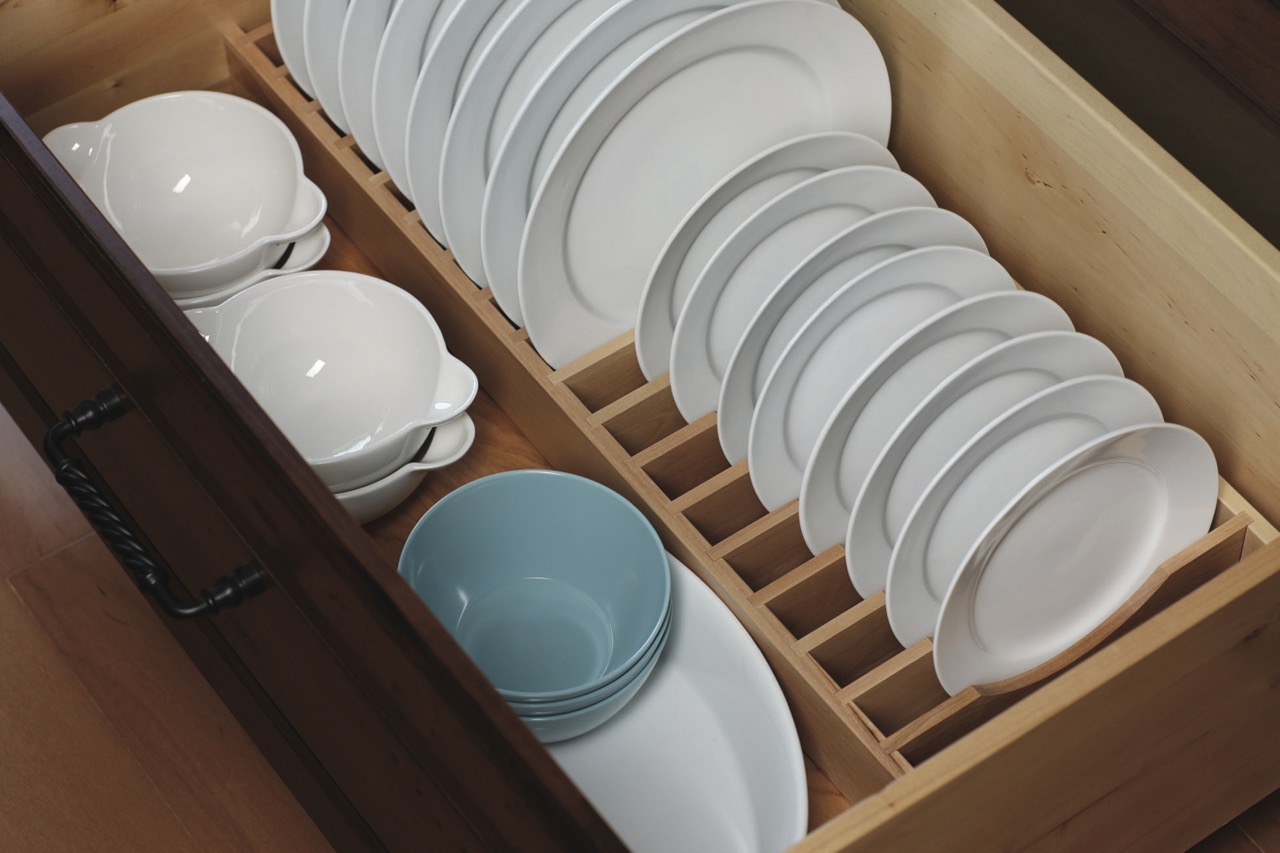

Articles
How To Store Custard
Modified: December 7, 2023
Learn the best methods for storing custard in this comprehensive guide. Follow these articles to keep your custard fresh and flavorful for longer.
(Many of the links in this article redirect to a specific reviewed product. Your purchase of these products through affiliate links helps to generate commission for Storables.com, at no extra cost. Learn more)
Introduction
When it comes to enjoying a delicious dessert, custard is undoubtedly a classic favorite. The creamy and velvety texture, combined with its rich flavor, makes custard a treat for the taste buds. Whether you’re indulging in a homemade custard or store-bought variety, proper storage is essential to maintain its quality and taste.
In this article, we will delve into the nuances of custard storage and share valuable tips to ensure your custard stays fresh and delicious for as long as possible. From understanding the components of custard to utilizing the right containers and temperatures, we’ll cover it all to help you savor every spoonful of this delectable dessert.
So, whether you’ve made a large batch of custard or have leftover portions from a meal, read on to discover the best practices for storing custard and maximizing its shelf life.
Key Takeaways:
- Proper custard storage involves using airtight containers, refrigerating at the right temperature, and avoiding air exposure to maintain its creamy texture and delicious flavor.
- Freezing custard in small portions, vacuum sealing, and labeling containers with freezing dates can extend its shelf life while preserving its quality and taste.
Read more: How To Store Store-Bought Bread
Understanding Custard
Before delving into the intricacies of custard storage, it’s important to have a basic understanding of what custard is and its composition. Custard is a creamy dessert that is typically made from a combination of milk or cream, eggs, sugar, and flavorings such as vanilla or nutmeg.
The eggs in custard play a vital role in creating its luxurious texture. They act as a thickening agent and give custard its smooth and silky consistency. The proteins in the eggs coagulate when heated, resulting in a thickened mixture that sets as it cools.
While traditional custards are cooked on the stovetop, there are also instant custard mixes available that require minimal preparation. These powdered mixes usually contain ingredients like cornstarch or other thickeners to mimic the texture of cooked custard.
It’s important to note that different types of custard can have varying shelf lives. Homemade custards, especially those made with raw eggs, tend to have a shorter storage time compared to commercial custards that may contain stabilizers and preservatives. Understanding the type of custard you have will help determine the best storage methods.
Factors Affecting Custard Storage
Several factors can impact the storage quality of custard, including temperature, exposure to air, and contact with other foods. Understanding these factors will help you make informed decisions when storing custard.
1. Temperature: Custard is a perishable item and should be stored at a consistent and appropriate temperature. The ideal storage temperature for custard is below 41°F (5°C). This helps to slow down the growth of bacteria and maintain the freshness of the custard for a longer period.
2. Air Exposure: Custard is prone to absorbing odors and flavors from its surroundings, so it’s important to minimize its exposure to air. Air exposure can also lead to the formation of a skin on the surface of the custard, affecting its texture. To prevent this, cover the custard with plastic wrap or place it in an airtight container.
3. Contact with Other Foods: Custard should be stored separately from strong-smelling foods, as it can absorb their flavors. Additionally, avoid placing custard near foods with strong moisture content, as they can release excess moisture and cause the custard to become watery or spoil faster.
4. Packaging: The type of container used for storing custard is crucial. Opt for containers that are specifically designed for food storage, such as glass or plastic containers with tight-fitting lids. These containers help to maintain the custard’s freshness and prevent leaks or spills.
By considering these factors and following proper storage practices, you can ensure that your custard remains delicious and enjoyable for an extended period, maximizing its shelf life.
Proper Containers for Custard
Choosing the right containers for custard storage is essential to maintain its quality and prevent any contamination. Here are some guidelines for selecting the proper containers:
1. Airtight Containers: Custard is sensitive to air exposure, which can lead to a skin forming on the surface and affect its texture. Therefore, it’s important to use airtight containers for storing custard. Containers with tight-fitting lids create a barrier against air, keeping the custard fresh for a longer period.
2. Glass or BPA-Free Plastic: Food-grade glass containers or BPA-free plastic containers are both suitable options for storing custard. These materials are non-reactive and will not affect the flavor or quality of the custard. Glass containers also allow you to see the contents, making it easier to identify and serve the custard.
3. Size and Shape: When selecting containers, consider the size and shape based on your storage needs. Choose containers that can accommodate the desired portion size of custard without leaving too much empty space. This helps to minimize air exposure and prevent moisture loss.
4. Portion-Sized Containers: If you plan on storing individual servings of custard, consider using portion-sized containers. These smaller containers allow for easy portioning and minimize the need for repeatedly opening and closing larger containers, reducing air exposure.
5. Freezer-Safe Containers: If you intend to freeze custard, ensure that the containers you choose are freezer-safe. These containers are designed to withstand low temperatures without cracking or breaking. Look for containers with the freezer-safe symbol or check the manufacturer’s instructions to confirm their suitability for freezing.
Remember to clean and sanitize the containers before using them for custard storage to eliminate any potential contaminants.
By selecting the right containers, you can preserve the freshness and quality of your custard, ensuring a delightful dessert experience every time.
Refrigerating Custard
Refrigeration is the most common method of storing custard, especially for short-term storage. Here’s how to refrigerate custard properly:
1. Cool Custard Completely: Before refrigerating custard, ensure that it has cooled completely at room temperature. This helps to prevent condensation from forming inside the container, which can lead to a watery texture.
2. Transfer to Airtight Containers: Transfer the custard to an airtight container, ensuring that it has a tight-fitting lid. This helps to protect the custard from air exposure and maintain its flavor and texture.
3. Label and Date: To keep track of the custard’s freshness, label the container with the date it was prepared. This allows you to know when it should be consumed or discarded.
4. Store at Appropriate Temperature: Place the custard in the refrigerator, ideally at a temperature below 41°F (5°C). This helps to slow down bacterial growth and extends the custard’s shelf life.
5. Avoid Stacking or Overcrowding: To ensure proper air circulation and even cooling, avoid stacking or overcrowding containers in the refrigerator. This allows the cold air to circulate around the custard, maintaining its quality.
6. Use within 3-4 Days: Custard stored in the refrigerator is best consumed within 3-4 days to maintain its quality and flavor. Beyond that, the custard may begin to lose its taste and texture.
Remember to always observe proper food safety practices and discard any custard that shows signs of spoilage, such as an off smell, mold growth, or unusual texture.
Refrigerating custard is a convenient method for storing it in the short term and ensures that you can enjoy its creamy goodness whenever the craving strikes.
Store custard in an airtight container in the refrigerator for up to 3 days. To prevent a skin from forming, place plastic wrap directly on the surface of the custard before sealing the container.
Read more: How To Store Basil From Grocery Store
Freezing Custard
Freezing custard is an excellent option if you have a surplus amount or want to extend its storage life for a longer period. Follow these steps to freeze custard properly:
1. Cool Custard Completely: Similar to refrigeration, ensure that the custard has completely cooled at room temperature before freezing. This helps to maintain its texture and prevents condensation during the freezing process.
2. Choose Freezer-Safe Containers: Select freezer-safe containers that are specifically designed to withstand low temperatures. Glass or BPA-free plastic containers with airtight lids are ideal for freezing custard. Avoid using containers that are not designed for freezing, as they may crack or shatter.
3. Portion Control: Divide the custard into individual portions or desired serving sizes before freezing. This allows for convenient thawing and reduces the need to thaw the entire batch if only a portion is needed.
4. Leave Space for Expansion: Leave some empty space at the top of the container as custard expands when freezing. This prevents the container from cracking or bursting due to pressure build-up.
5. Seal and Label: Seal the containers tightly to prevent air from entering and label them with the date of freezing. Proper labeling ensures that you can keep track of the custard’s storage duration and prioritize consumption accordingly.
6. Freeze at 0°F (-18°C): Place the custard containers in the freezer and set the temperature to 0°F (-18°C). Ensure that the freezer maintains a consistent temperature throughout to prevent fluctuations that can affect the texture and quality of the custard.
7. Use within 3 Months: Custard can generally be stored in the freezer for up to 3 months. Beyond that, the quality may start to deteriorate. Remember to consume the oldest batch of frozen custard first.
When you’re ready to enjoy the frozen custard, transfer it to the refrigerator and allow it to thaw slowly overnight. Avoid thawing custard at room temperature, as this can promote bacterial growth and result in spoilage.
Freezing custard is a practical way to preserve it for an extended period, ensuring that you can savor its creamy deliciousness whenever you desire.
Thawing Frozen Custard
Thawing frozen custard properly is crucial to maintain its texture and flavor. Here’s the recommended method for thawing frozen custard:
1. Transfer to the Refrigerator: Take the container of frozen custard out of the freezer and place it in the refrigerator. Thawing custard slowly in the refrigerator allows it to defrost evenly and prevents any drastic temperature changes that can affect its quality.
2. Allow Sufficient Thawing Time: The time required for custard to thaw in the refrigerator will depend on the size of the container and the density of the custard. In general, it’s best to allow custard to thaw overnight or for at least 8-12 hours. This gradual thawing ensures that the custard retains its creamy texture.
3. Do Not Refreeze Thawed Custard: Once the custard has thawed completely, do not refreeze it. Refreezing can negatively impact the texture and quality of the custard, causing it to become grainy or lose its smooth consistency.
4. Stir Gently (if needed): While thawing, the custard may separate or develop a slightly grainy texture. If this happens, gently stir the custard to restore its smoothness. Avoid over stirring, as it can introduce unnecessary air into the custard and affect its texture.
5. Check for Quality: After thawing, inspect the custard for any signs of spoilage, such as an off smell, mold growth, or unusual texture. If the custard appears to be compromised, it’s best to discard it to avoid any potential health risks.
Remember, the thawed custard should be consumed within a few days. It’s recommended to use the thawed custard as soon as possible to enjoy it at its best. If you have thawed more custard than needed, avoid refreezing it and consider using the extra portion for creative custard-based desserts or treats.
By following these thawing guidelines, you can enjoy the full flavor and creamy consistency of your frozen custard.
Storing Leftover Custard
Leftover custard can be stored for a short period, allowing you to enjoy it later. Follow these steps to store leftover custard properly:
1. Cool Custard Completely: If you have leftover custard after a meal or dessert, allow it to cool completely at room temperature. Cooling helps to prevent condensation and maintain the custard’s texture.
2. Transfer to Airtight Containers: Transfer the leftover custard to airtight containers. Choose containers that are an appropriate size for the amount of custard you have, leaving minimal empty space at the top. Airtight containers help to preserve the custard’s flavor and prevent air exposure.
3. Refrigerate Promptly: Place the containers of leftover custard in the refrigerator as soon as possible. The custard should be refrigerated within two hours of being cooked or removed from the freezer to prevent the growth of harmful bacteria.
4. Use within 3-4 Days: Leftover custard stored in the refrigerator should be consumed within 3-4 days. Beyond that, the custard may start to lose its flavor and texture. Remember to check for any signs of spoilage before consuming.
5. Single-Serving Portions: To make it easier to enjoy smaller portions of leftover custard, consider dividing it into individual servings before storing. This way, you can simply grab a portion when you’re ready to indulge without needing to thaw or consume the whole batch.
6. Avoid Reheating Frozen Custard: If you have frozen custard and want to store the leftovers, it’s best to thaw the entire batch in the refrigerator and then store the thawed custard using the steps mentioned above. Reheating previously frozen custard can lead to changes in texture and flavor.
By following these steps, you can safely store leftover custard and enjoy it for a few days without compromising its taste or quality.
Tips for Long-Term Custard Storage
If you want to store custard for an extended period, whether it’s homemade or store-bought, here are some tips to maximize its shelf life:
1. Freeze in Small Portions: Instead of freezing custard in one large container, consider dividing it into smaller portions. This allows you to thaw only what you need, reducing waste and maintaining the quality of the remaining custard.
2. Vacuum Sealing: Consider vacuum sealing the custard before freezing to minimize air exposure. Vacuum sealing helps to preserve the custard’s texture, flavor, and overall quality, extending its storage life.
3. Label and Date: Always label each container of custard with the date of freezing. This ensures that you can keep track of the custard’s storage time and prioritize consumption accordingly. Use the oldest containers first to prevent them from being forgotten and potentially wasted.
4. Keep a Consistent Freezer Temperature: Maintain a consistent freezer temperature at or below 0°F (-18°C) to ensure that the custard remains frozen properly. Fluctuations in temperature can compromise the texture and quality of the custard over time.
5. Proper Thawing: When ready to use the frozen custard, thaw it in the refrigerator rather than at room temperature. Thawing in the refrigerator allows for gradual defrosting and helps retain the custard’s texture and taste.
6. Discard Any Spoiled Custard: Always check the custard for any signs of spoilage, such as an off smell, mold growth, or unusual texture, before consuming. If you’re unsure about the custard’s condition, it’s best to err on the side of caution and discard it.
7. Follow Recommended Storage Times: While custard can be stored for several months in the freezer, it’s best to consume it within 3 months for optimal taste and quality. Beyond that, the custard may begin to lose its flavor and texture.
By implementing these tips, you can prolong the storage life of custard and still enjoy its delightful taste and creamy texture when the craving strikes.
Read more: How To Store Jordans
Conclusion
Custard is a beloved dessert known for its creamy texture and delectable taste. Properly storing custard is crucial to maintain its quality and ensure its longevity. Whether you’re refrigerating custard for short-term storage or freezing it for a longer period, following the right techniques will help preserve its flavor and texture.
Understanding the factors that affect custard storage, such as temperature, air exposure, and suitable containers, allows you to make informed decisions about its preservation. Refrigerating custard helps to keep it fresh for a few days, while freezing custard extends its shelf life for several months.
Thawing frozen custard slowly in the refrigerator ensures that it maintains its creamy consistency, while proper storage of leftover custard allows you to enjoy it for a few days without compromising its taste or quality.
For long-term custard storage, dividing it into smaller portions and vacuum sealing before freezing can help preserve its flavor and texture. Consistency in freezer temperature and proper thawing techniques contribute to maintaining the custard’s quality over time.
Remember to always check for signs of spoilage before consuming custard and discard any custard that shows indicators of being unsafe to eat.
In conclusion, by following the tips and techniques outlined in this article, you can confidently store custard and enjoy its deliciousness at your convenience. Whether you’re preparing a homemade custard or utilizing store-bought options, proper custard storage ensures that every spoonful remains as delightful as the first.
Frequently Asked Questions about How To Store Custard
Was this page helpful?
At Storables.com, we guarantee accurate and reliable information. Our content, validated by Expert Board Contributors, is crafted following stringent Editorial Policies. We're committed to providing you with well-researched, expert-backed insights for all your informational needs.














0 thoughts on “How To Store Custard”